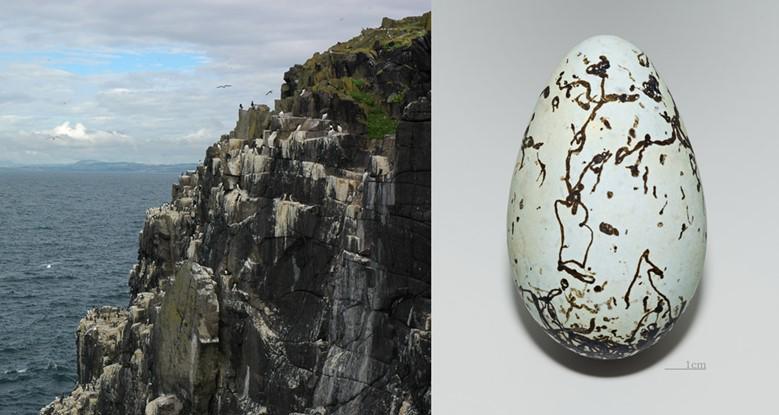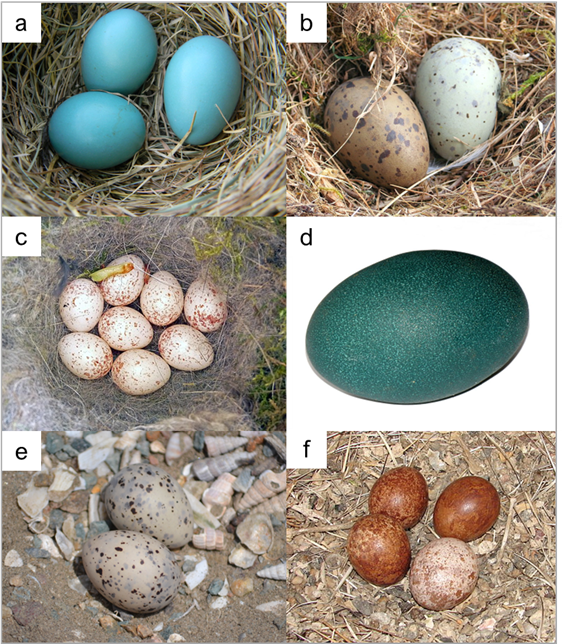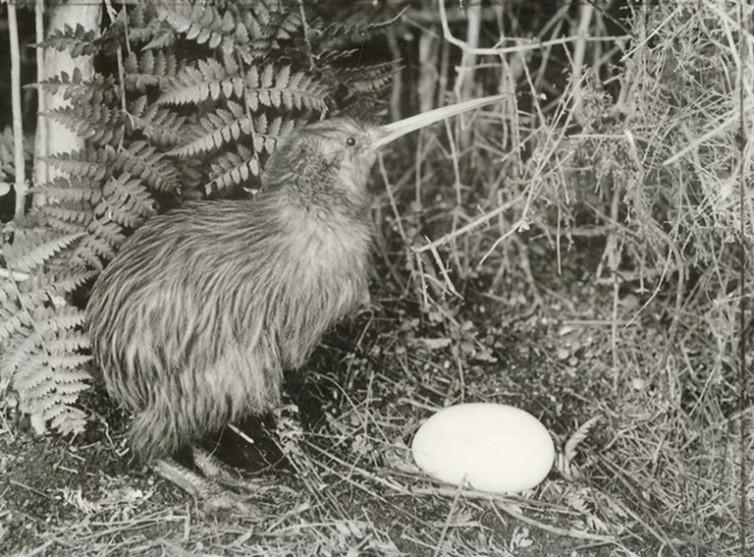Eggs are self-contained life-support systems which provide protection and nutrition for the developing offspring. Eggs which can survive outside an aquatic environment, even in hostile conditions, were a key innovation in evolution – it allowed reptiles and birds to breed on land, away from water. That’s why, unlike frogs and toads, you don’t see lizards coming back to your garden pond!
Eggs with shells (crunchy in birds, leathery in other groups like reptiles) are scientifically known as ‘amniotic’, because they all contain a fluid-filled sac called the ‘amnion’ (this is the inner skin you find in your hard-boiled eggs). This keeps the inside of the egg nice and damp, while the tough shell protects the egg itself. Despite the toughness, the shell is porous to allow the exchange of gases like oxygen and carbon dioxide. Baby’s own space capsule!
In birds, the shell forms over the course of about 20 hours spent in the final part of the female’s oviduct. Mineralised calcium carbonate is added until the shell is hard; if the bird doesn’t have enough calcium carbonate available, the egg is rubbery when laid and usually fails to hatch.
In reptiles and some mammals, the shell is leathery. Yes, some mammals lay eggs! Duck-billed Platypus females lay small leathery eggs into a burrow filled with dead leaves, whereas female Echidnas lay eggs directly into a pouch underneath their body. Most mammals have taken this a step further by never laying the egg externally at all – instead, the placenta plays the role of the amniotic egg. It provides the developing embryo with the watery environment, necessary nutrients and protection required for proper development, but in an even safer place – tucked away inside the mother.
The shape of Easter eggs is based on the egg that we most commonly come into contact with: that of the chicken. But eggs come in all kinds of shapes and sizes! One of the more unusual shapes is the egg of the Common Guillemot. This is a cliff-nesting seabird which must battle rain, wind and waves crashing as they incubate their eggs on precariously narrow ledges around the UK. To make sure that all this disturbance doesn’t make the eggs roll off into the sea, the egg is highly asymmetrical, almost cone-shaped, with a broad, rounded base which tapers to a narrow point. Because of this unusual shape, when disturbed the egg will roll around in a tight circle which gives it a much higher chance of staying on the ledge. By contrast, the Brown Hawk-owl from southern Asia has a perfectly spherical egg.
 Breeding common guillemots on the Isle of May, Scotland (Kate Ashbrook) and their asymmetrical egg (Muséum de Toulouse by Didier Descouens, CC BY-SA 4.0 Wikimedia Commons)
Breeding common guillemots on the Isle of May, Scotland (Kate Ashbrook) and their asymmetrical egg (Muséum de Toulouse by Didier Descouens, CC BY-SA 4.0 Wikimedia Commons)
If you are hand-decorating eggs this Easter, then you can take inspiration from the natural world as well. Bird eggs come in a dazzling array of colours and patterns, from the deep blue of the American Robin’s egg to the dark green, almost black, of Emu eggs. Returning to the Common Guillemot, eggs can range from white to a bright turquoise in colour, and are covered with dark spots, stripes or scribbles. Despite the amazing array of colours and patterns found in birds’ eggs, there are only two-colour pigments involved: blue-green biliverdin, and red-brown protoporphyrin IX. Mixing these two pigments on the underlying white shell is the basis for all the different colours patterns worldwide. Egg colour has been associated with temperature, with darker eggs found in birds living in colder temperatures, suggesting that darker eggs may absorb more heat than lighter ones.

Bird egg colouration is incredibly variable! In the eggs pictured we can see:
- (a) American Robin eggs (Laslovarga, CC BY-SA Wikimedia Commons)
- (b) Herring gull eggs (John Haslam, CC-BY Wikimedia Commons)
- (c) Great tit eggs (NottsExMiner, CC-BY Wikimedia Commons)
- (d) an Emu egg (Vaikoovery,CC-BY Wikimedia Commons)
- (e) Western snowy plover eggs (USFWS Pacific Southwest Region; CC-BY Flicker)
- (f) Peregrine falcon eggs (Peter Wegner, CC-BY Wikimedia Commons).
Birds vary hugely in size, so it’s not surprising that their eggs are equally variable. At 7mm long and weighing only 0.3 grams, the smallest egg belongs to the Bee Hummingbird. However, adults only weigh between 1.7 – 2.5 grams, so perhaps the size is unsurprising! At the other end of the scale, the largest egg of any living bird belongs to the Ostrich, which can be 16 cm long and weigh up to 2.5 kilograms! While laying such a large egg may seem like quite a feat, this only represents 2% of the female’s body weight.
 A New Zealand Kiwi with her massive egg (Mr Christensen, CC BY Archives New Zealand).
A New Zealand Kiwi with her massive egg (Mr Christensen, CC BY Archives New Zealand).
Finally, as you consume your chocolate eggs this Easter, be thankful that you are not a New Zealand Kiwi. Females lay eggs of around 370g, an amazing 15% of her body weight. The eggs are so large that during the last couple of days of its development inside the female, she is forced to fast because her stomach is so compressed. In humans at Easter, of course, this is more or less the other way round!
Dr Kate Ashbrook is a Senior Lecturer in Biological Sciences. Her research interests focus on using modelling to understand the dynamics of ecological systems and inform conservation management. She works with conservation partners, such as the Bumblebee Conservation Trust (BBCT), to develop evidence-based conservation management strategies and monitoring protocols.
Dr Chris Brown is a Principal Lecturer in Animal Biology/Biology. His research interests are broadly in the field of physiological ecology of mammals and birds. He has carried out research on the energetics and feeding ecology of penguins, albatrosses and petrels in the sub-Antarctic, physiological studies on a variety of small mammals and birds in South Africa and dippers in Scotland.